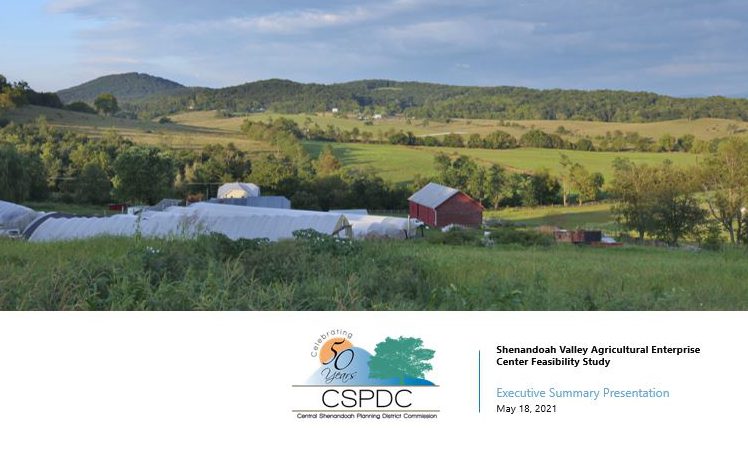The Agricultural Enterprise Center Feasibility Study
Key Research Findings:
Key themes emerged during the market analysis. The Shenandoah Valley, uniquely centrally located for both regional and national distribution, presents an opportunity for small farm growth and to connect with existing infrastructure and services within the region. Surveys and interviews identified the need to meet the growing consumer demand for quality local product and convenience and the desire to create stronger networks and partnerships for scale. There is a general sentiment of pride of the rich agricultural history of the region, and the following needs were identified to bolster this industry:
- Small farmers will need to pivot and become wholesale ready in order to reach more markets/customers outside of direct-to-consumer sales.
- Significant interest in having a USDA-inspected shared-use commercial kitchen in the region, as farmers currently have to travel outside the region for access.
- Research found high interest in services that can take the onus off the farmer or business to do marketing, sales, distribution, and regulatory compliance.
- Farmers in the region are independent yet want access to shared resources.
- Virginia farmers are competing with ranchers in the West and commodity farmers in the Corn Belt, but the region doesn’t have the acreage to compete with either: farmers have the opportunity to focus on high-value, specialty crops to differentiate from commodity agriculture.
- The region can grow a diversity of crops and specialty produce, top crops grown include: tomatoes, potatoes, squash, beans, sweet corn, cucumber, greens/lettuces, beans, berries, peaches, apples, and grapes.
- Local demand/buying power within the region is limited but is strong in nearby cities and within the state of Virginia, and there is growing demand for high-value hand-picked crops (i.e., asparagus, berries, tomatoes).
- A lack of meat slaughter and processing infrastructure in the region is a threat to family farm businesses.
Next Steps Include:
- Continue stakeholder outreach
- Perform operator and anchor tenant searches. Convene a search committee, issue operator and tenant RFIs.
- Identify and strengthen third-party partnerships. Slaughter facilities, meat processors, Cooperative Extension, specialty distributors, specialty groceries, and markets will be important to cultivate early.
- Perform site search and selection. Continue facility site search and vetting using site criteria from the study.
- Begin facility design and business planning. Update the operating model and building program based on the chosen site, operator, and anchor tenant requirements.
- Refine the business plan. Complete a comprehensive business plan that reflects the strategic vison of the selected owner/operator and their operating model.
- Commence fundraising. Create a fundraising plan to explore and secure diverse streams of capital from both public sources and private investors.



